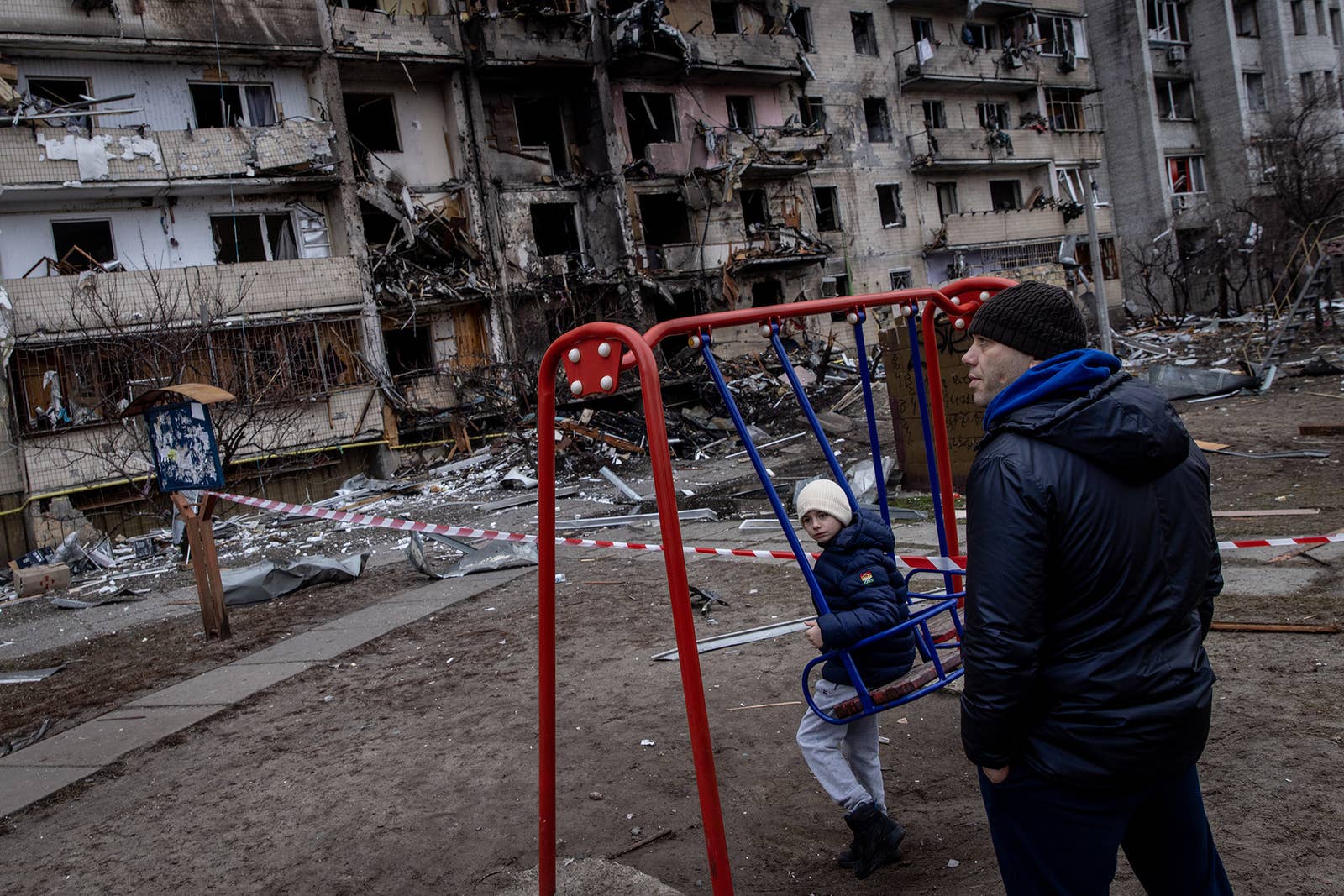
When Russia invaded Ukraine on Feb. 24, 2022, it led to a painful new chapter for both countries, who since 2014 have been embattled in the Russo-Ukrainian War. Russia’s invasion was condemned by Ukraine’s allies around the world and led to an estimated tens of thousands of deaths on both sides by the end of August. Almost 8 million Ukrainian refugees have fled the country, prompting the largest refugee crisis in Europe since World War II.
With newer precision technology through drone and missile strikes on Ukrainian cities and villages, the conflict in Ukraine has been a drastically different kind of war, aside from the gruesome hand-to-hand combat that many have seen on social media in real time. The situation has proved to be a challenge for photojournalists who have been on the ground in Ukraine and risking their lives to document the war.
BuzzFeed News spoke with three photojournalists from Getty Images about their experience capturing the human element of Russia’s invasion of Ukraine.
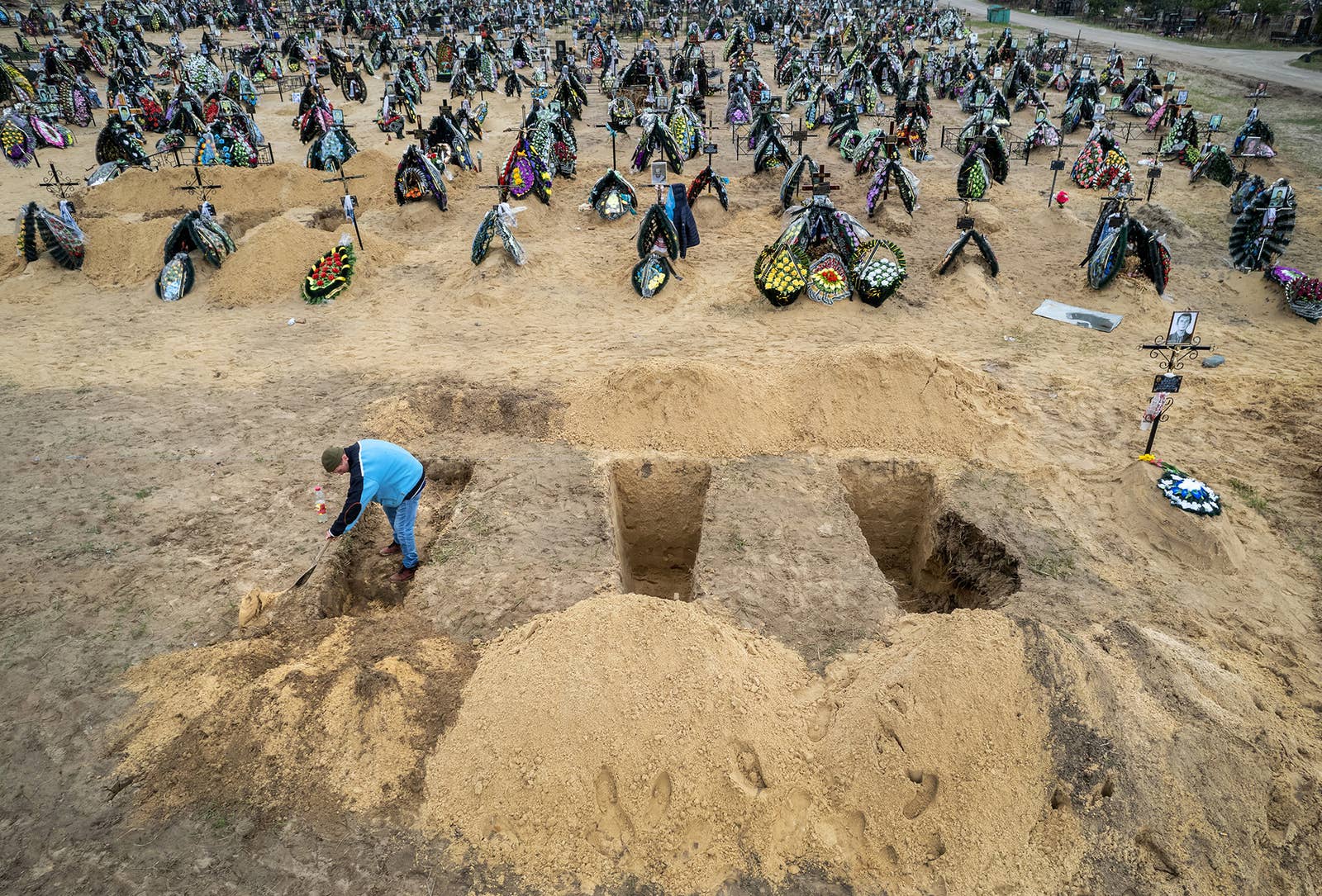
John Moore, special news correspondent, Getty Images: By the time I arrived to Ukraine in April, the conflict was into its second month. Even by then, many Ukrainians were starting to worry that the world might forget about them and their suffering. By and large, Ukrainians are extremely welcoming to international photojournalists, especially American ones like me, telling their story. They want us there to document these terrible atrocities so that the world, and history, will never forget.
Another unique aspect of working in Ukraine are the dangers. In this conflict, the main danger is shrapnel from shelling, especially for photographers working in frontline areas. In Afghanistan and Iraq, there was the major risk of kidnapping, which isn’t so much the case in Ukraine, which has more defined front lines.
Chris McGrath, chief news photographer, Getty Images: I think the biggest difference of this war is that it is very much a modern high-tech war. The use of technology, such as drones and precision weaponry, make it difficult to photograph, as these don’t really make much of a photograph, so everything we are shooting is mainly aftermath rather than the actual event occurring.
However, every war is the same in the fact that the result is the same — pointless, needless death. This is what stands out emotionally for me. Repeatedly, I have photographed scenes of civilian deaths, where people have just been doing very normal daily life tasks, like going to the grocery store, and then are hit by random shelling and killed for absolutely no reason. These images are very hard to take, and they're hard to come to terms with afterwards, when you start to put your own family, your own friends, in that situation. So for me, that's been a big issue to deal with.
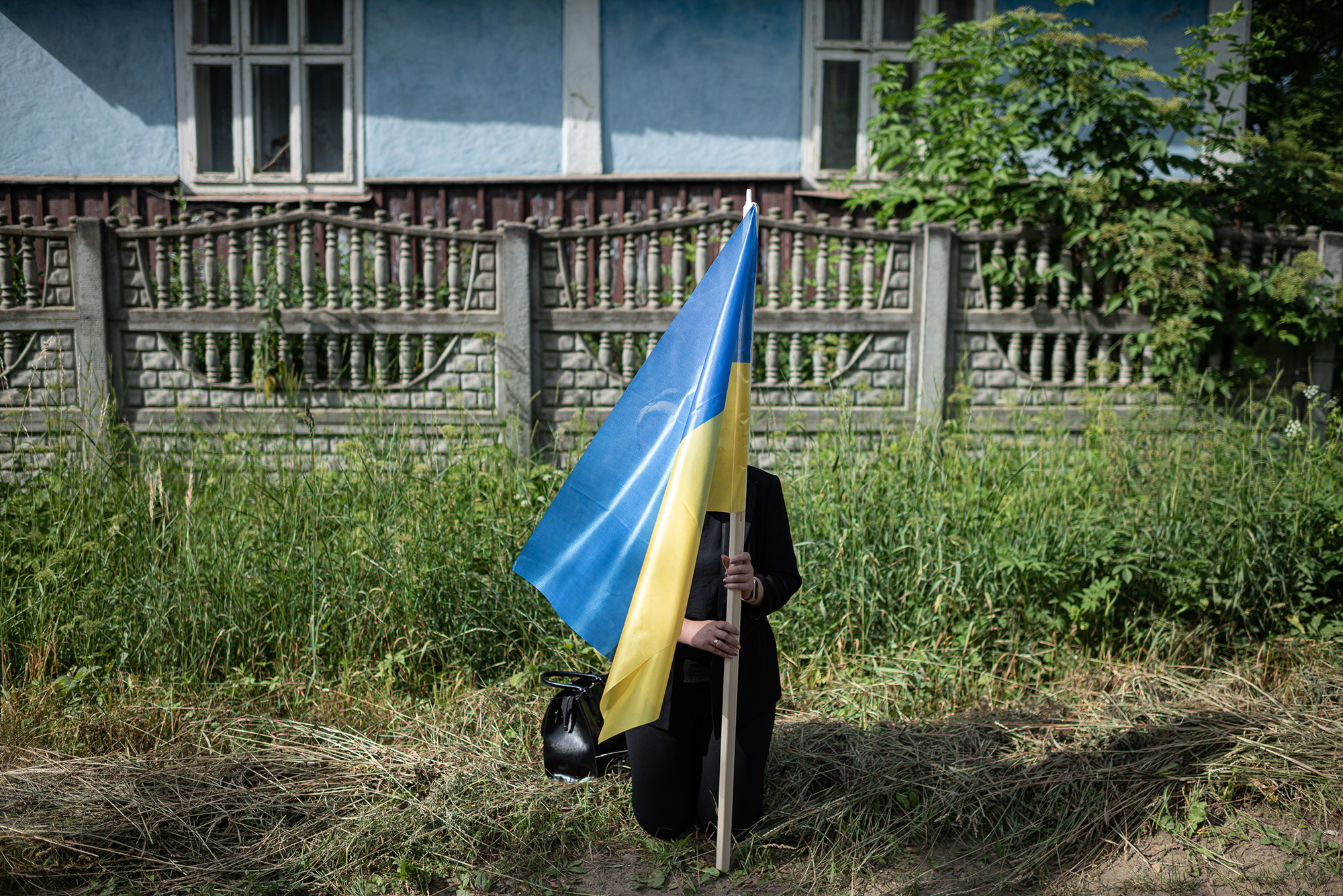
Alexey Furman, freelance photographer/stringer, Getty Images: I’m a Ukrainian photojournalist, and I’ve been based in Ukraine since the beginning of my career over 10 years ago. The full-scale Russian invasion of 2022 is my second war, you could say, the first one being the war that Russia started in Ukraine in 2014 with the occupation of the Crimean Peninsula.
I think the biggest difference between the full-scale Russian invasion of 2022 compared to the war that started in 2014 is the scale of the conflict and, as a result, the scale of the tragedy. The war in Donbas in 2014 was contained in eastern Ukraine, while the Russian invasion of 2022 started in many regions simultaneously.
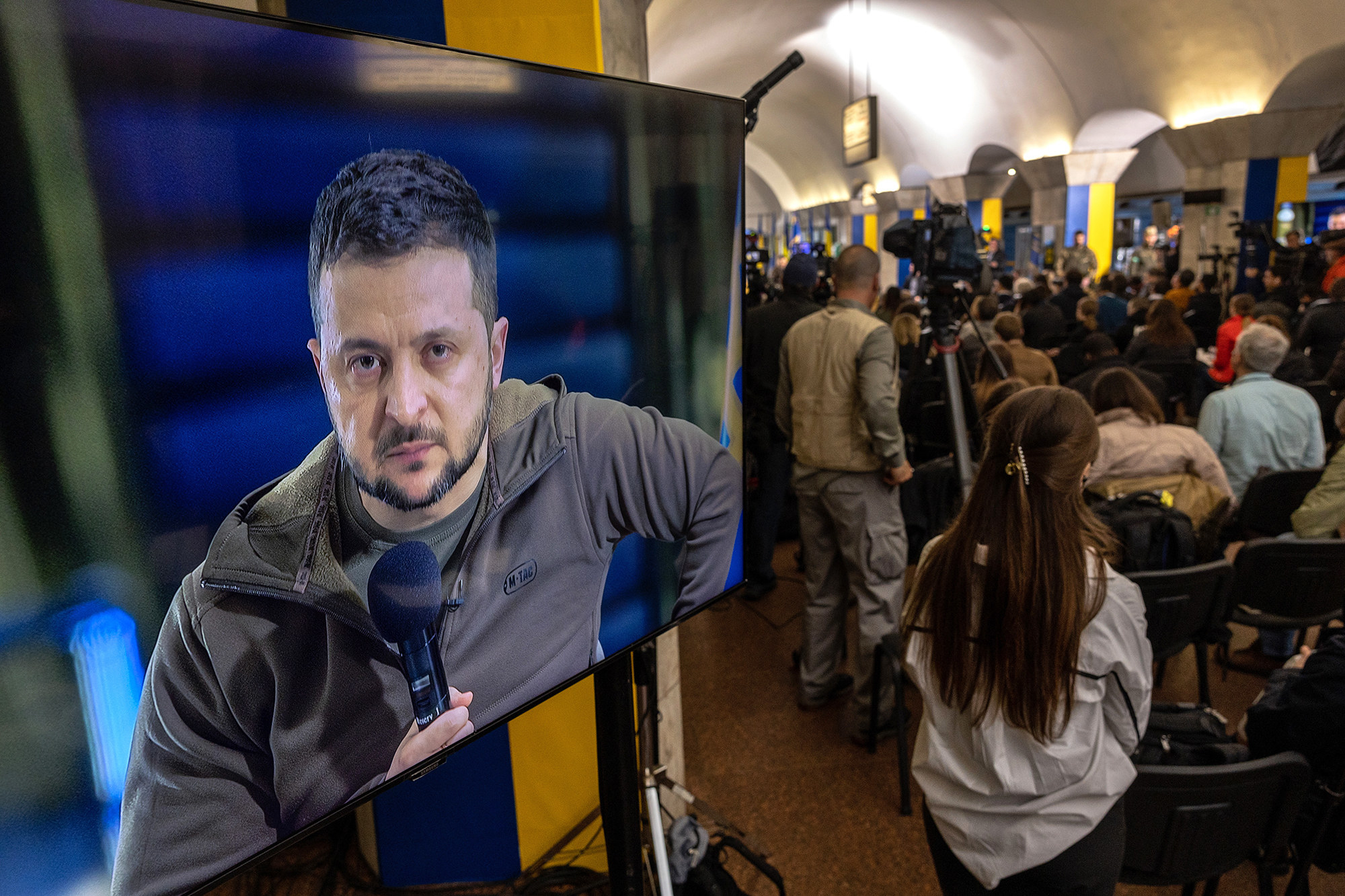
JM: Like in most countries, prewar Ukraine had very deep political divisions, and many citizens were not fans of President [Volodymyr] Zelensky. Russia’s invasion of the country, of course, changed everything, uniting most Ukrainians behind the former comedian and actor. Even many people in places of the south and east of Ukraine, where Russian is their first language, threw their allegiance behind the government in Kyiv.
As a photojournalist, I had fairly open access to photograph people in difficult conditions, and they were open to showing that reality. People allowed me into their homes and showed how they were living in the rubble of their former lives. Many were very open to photographers covering funerals of their loved ones. They were grieving but proud in their grief and wanting the world to see.
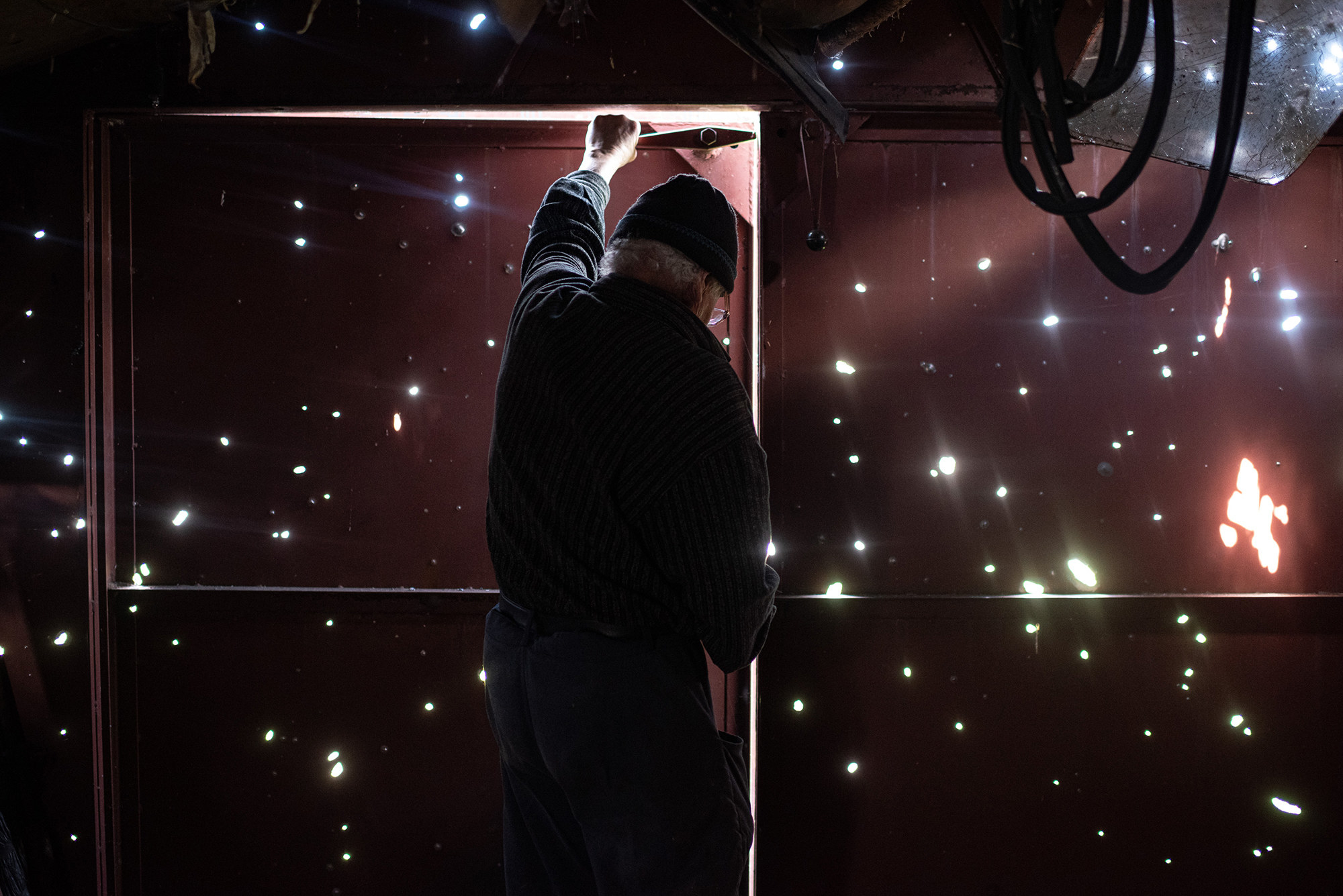
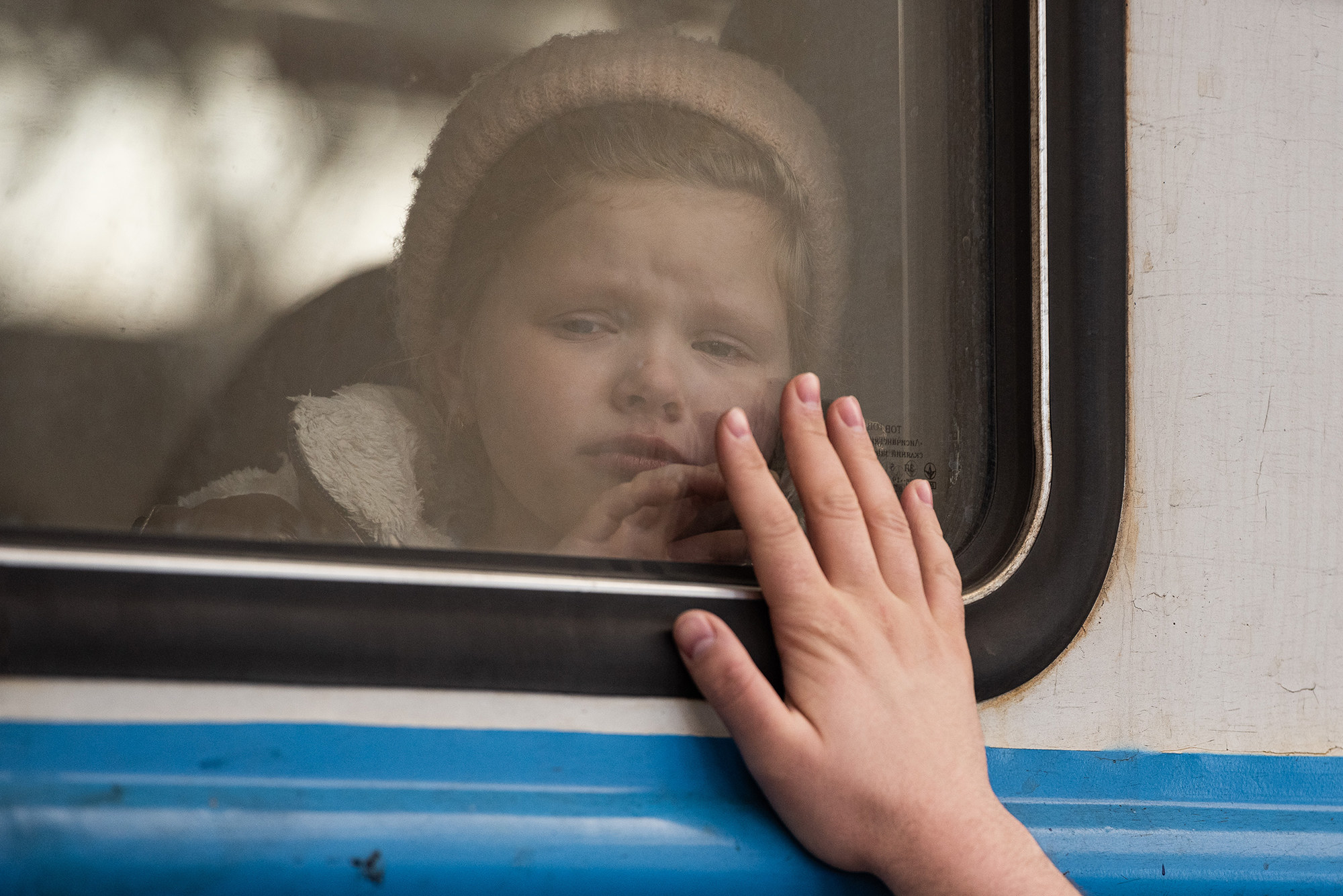
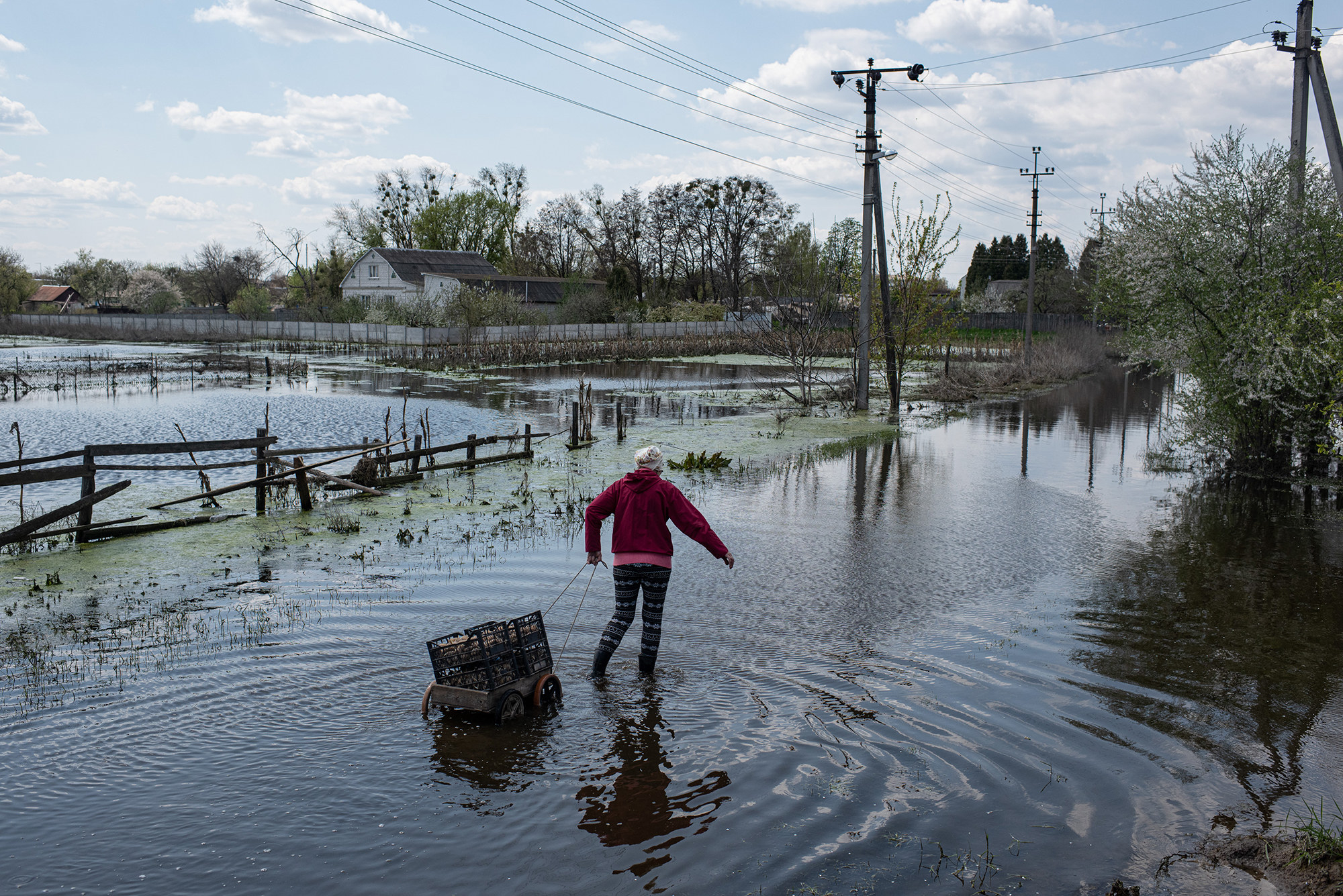
AF: The emotion that comes to mind when I think about Ukraine today is resilience. This is one word that best describes Ukrainians and Ukraine today. It comes off in every story you can see from Ukraine today, be it the resilience of the Ukrainian military liberating Ukrainian villages, towns, and cities; or people coming back to their destroyed homes and rapidly rebuilding them; or Ukrainians, both civil and military, quickly recovering from physical injuries they sustained; or kids singing patriotic songs in bomb shelters.
Even the Ukrainians that don’t take an active part in combat are dealing with Russian rocket hits, power outages, and lots of stress on a daily basis, and they just keep going with their lives. An air alarm by now is just a usual disruption of our daily routine, like going out for groceries, and nothing more.
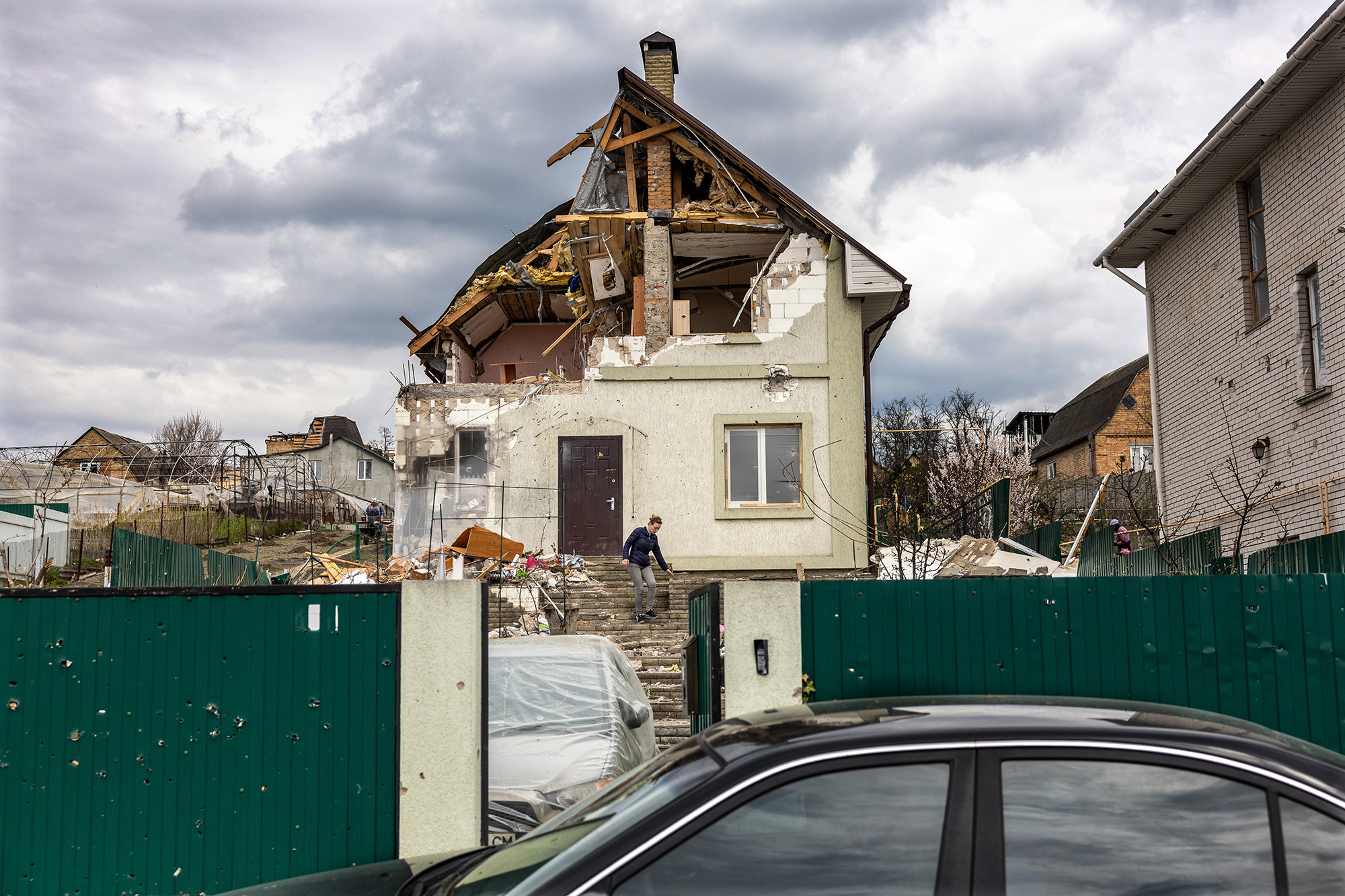
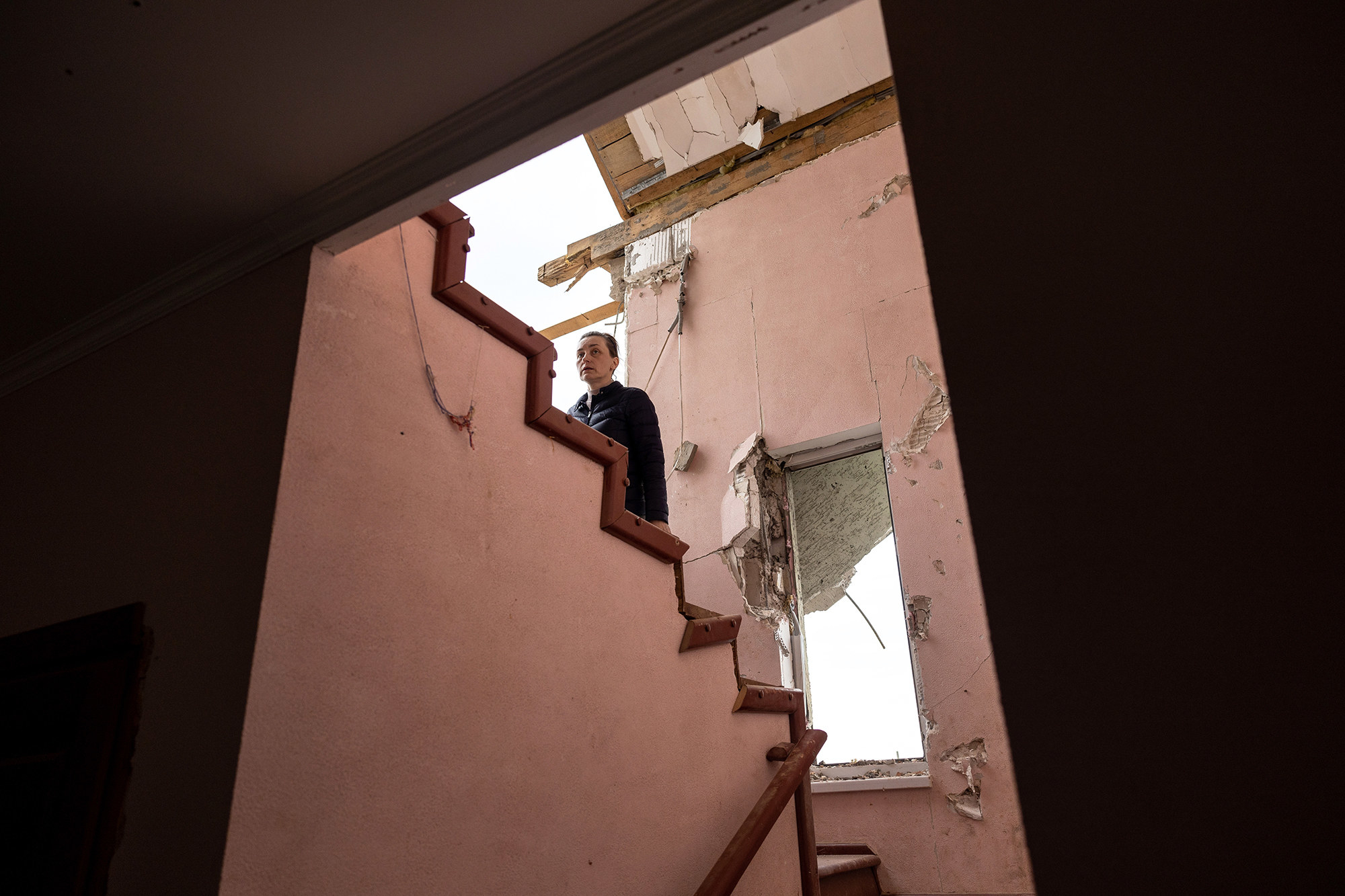
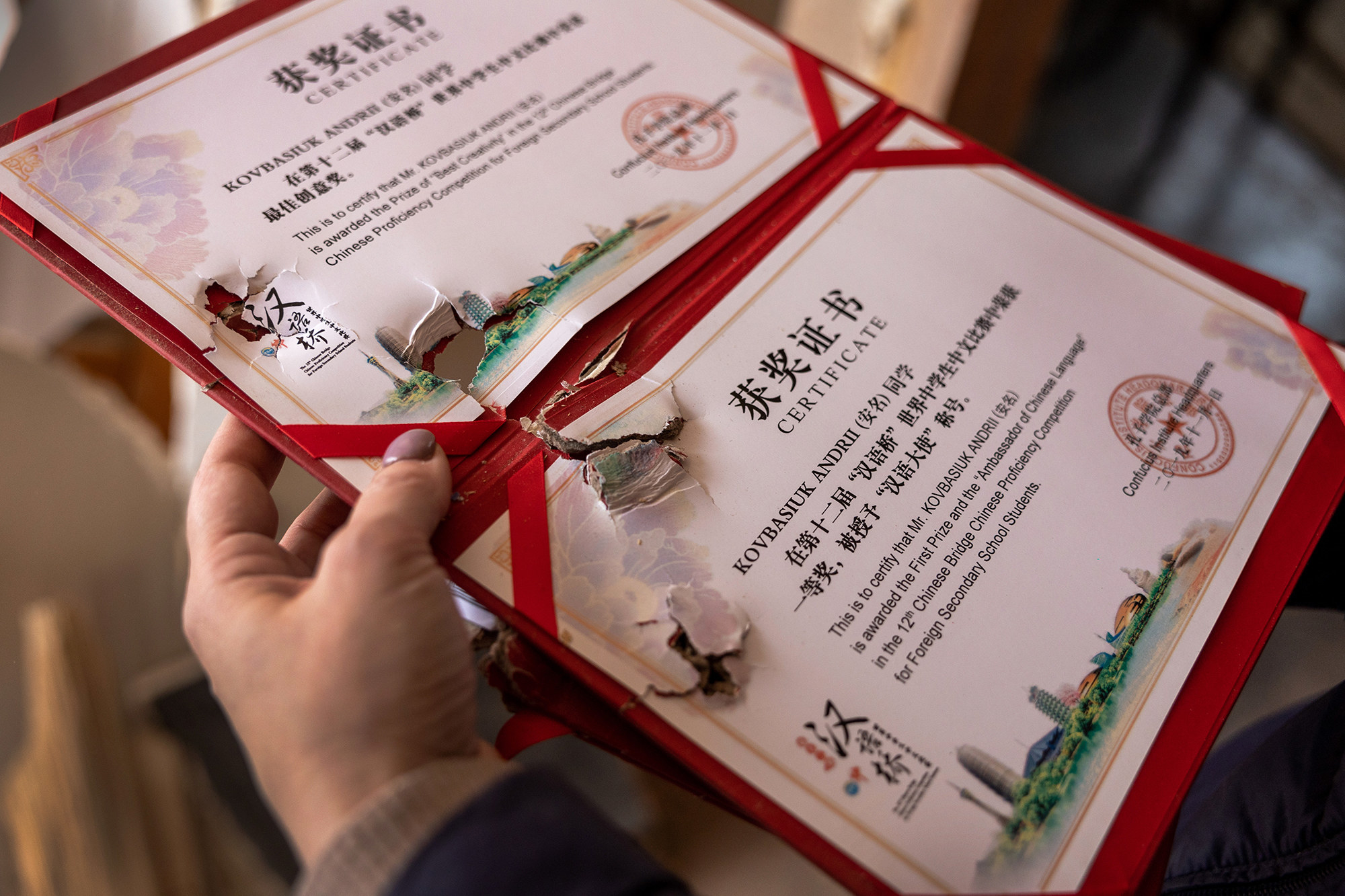
JM: One day I was flying my drone and making photos of the generalized destruction of a neighborhood in Hostomel, located on a former front line on the outskirts of Kiev. From the air, I noticed someone taking out belongings from a heavily damaged home. So I landed the drone and went over to the house and met [a woman named] Oksana. She led me up through the ruined staircase of her home into the disaster that had been the upper floor of her house. It looked like it had been hit by a tornado, but no, she said it was a Russian rocket. Her mother and grandmother had been home at the time but survived. Now she was collecting what salvageable items she could. The openness and matter-of-fact way she told her family’s story really struck me. No hyperbole or melodrama was needed, just the facts.
On a more personal note, there was one occasion when my fixer at the time was trying to drive us around a massive hole in a bridge. The bomb, probably a mortar, had also blown off the guard rails. He steered too far to the right, and from my passenger-side seat, I saw that I was hanging over the side of the bridge. The front wheel drove off, the axle bottomed out, and just when I thought we would flip into the ravine below, he pulled left, and the vehicle jumped back up onto the bridge. From then on, I drove.

CM: My image of Oleg and Yana kissing through the fence has stood out to me as one of my strongest photographs. The photograph came about on March 4 in Irpin, the town that borders Bucha, which was the scene of horrific war crimes while under Russian occupation.
It was a situation that I ended up in due to getting stuck in Irpin the day before when Russian forces cut off the only road going in and out of Irpin, and I had to shelter that night in a school with local residents. Russian forces had taken Bucha the day before on March 3, and as I was trying to get out of Irpin on the morning of the fourth of March, I saw hundreds of people gathering at the Irpin train station. An evacuation train had been scheduled for that day after the heavy overnight fighting in Bucha, and many residents had decided to flee. Hundreds of women and children were waiting for the train to arrive.
Standing on the platform, I met Yana and Oleg and their 11-month-old son. Yana was waiting to take the train, and Oleg was forced to stay behind with all the other men to fight. So the evacuation train was just full of women and children and the men all standing on the other side of the fence. For me, the image represents a theme I have seen across the six months I have covered the war: the theme of separation, families being separated, separation from home. From the very start of the war, when we saw the mass exodus to Poland and other European countries, it has been a constant theme to me everywhere I go in the country.
I don't think I've met anyone who hasn't had some form of separation from their loved ones or home. So this photograph really represented this separation to me. I didn't expect this situation — I was standing talking with them when Oleg pushed through the platform fence to give his wife one last goodbye kiss. It was a moment that summed everything up about the war to me.
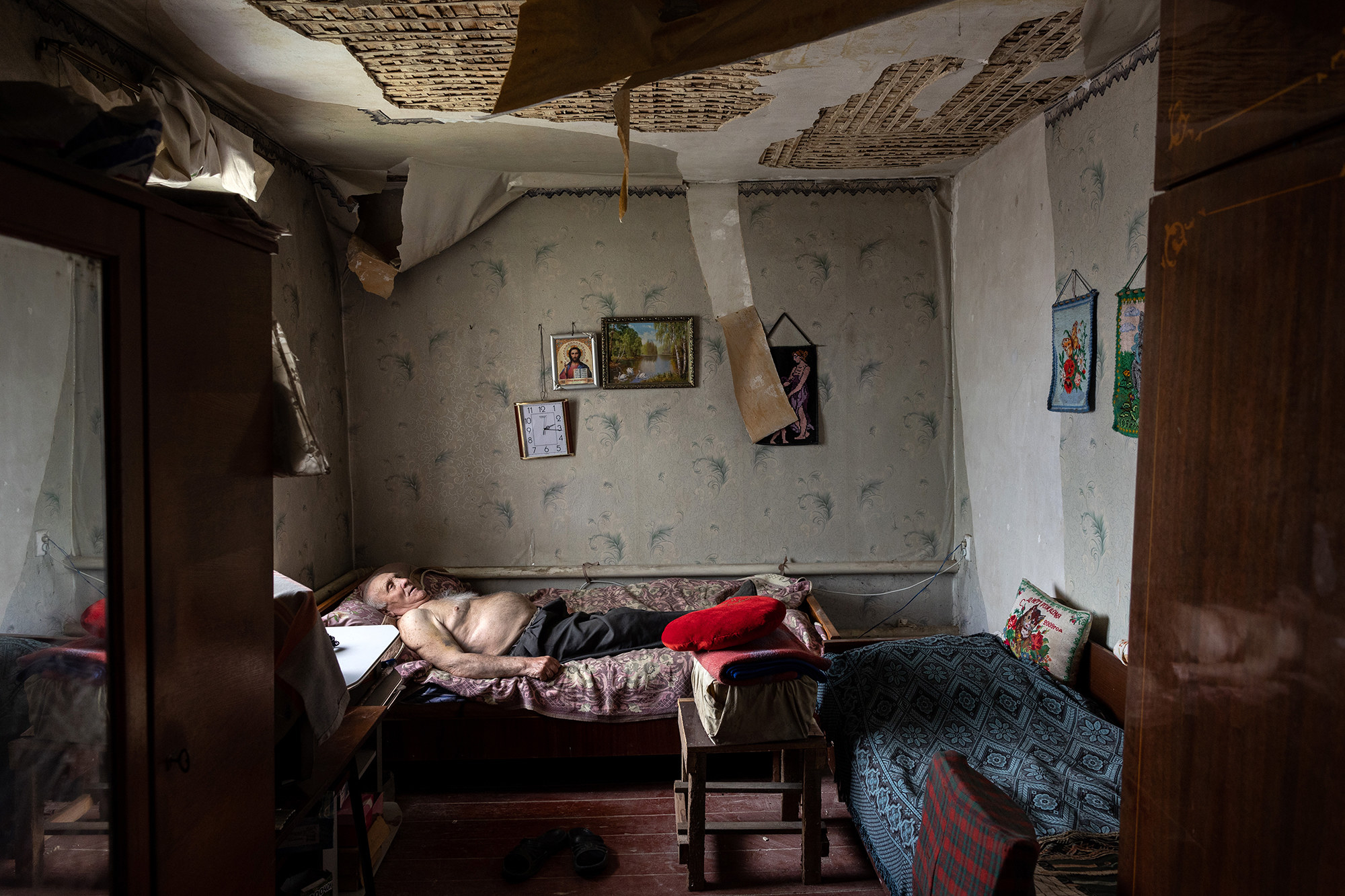
JM: My goal was to make as strong a visual contribution as possible to the incredible canon of conflict photography that’s come from this tragic and protracted story. There have been so many truly historic moments captured by many of the best photojournalists, both Ukrainian and international, covering the war in Ukraine. No single photographer can truly “own” this story. It’s too broad and enduring for that. All of us, however, can make contributions to this tragically historic coverage. Some photojournalists, of course, have had an outsized role in that coverage, requiring extraordinary bravery and dedication.
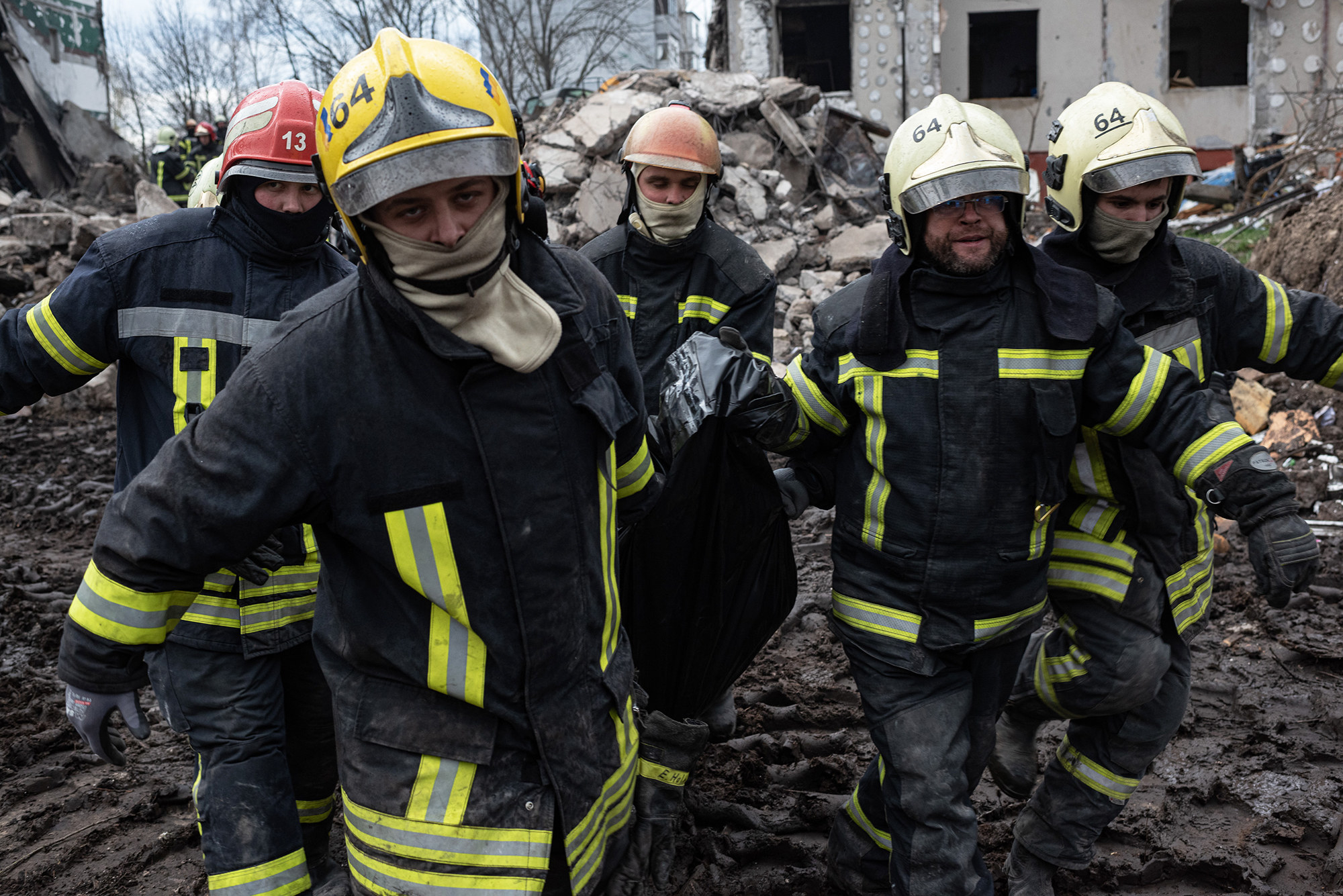
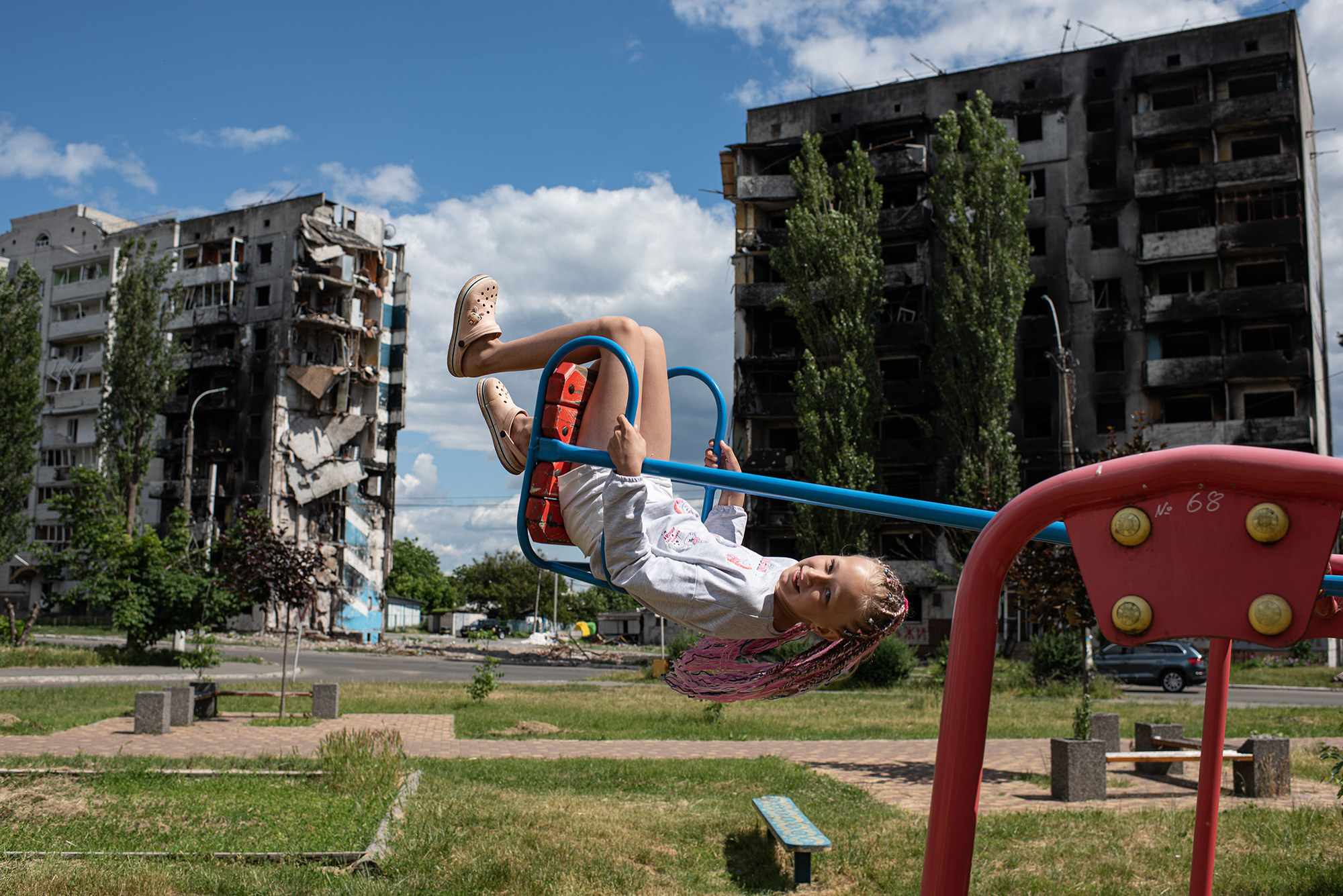
AF: One of the stories I covered most actively is life returning to the liberated villages and towns around Kyiv. It was striking how life was quickly winning over death in places like Bucha and Borodianka. I visited the latter to photograph rescue workers looking for people killed by a Russian bombing under the apartment building rubble in April, and in June, I was photographing teenagers playing basketball, and kids having fun on the swings.
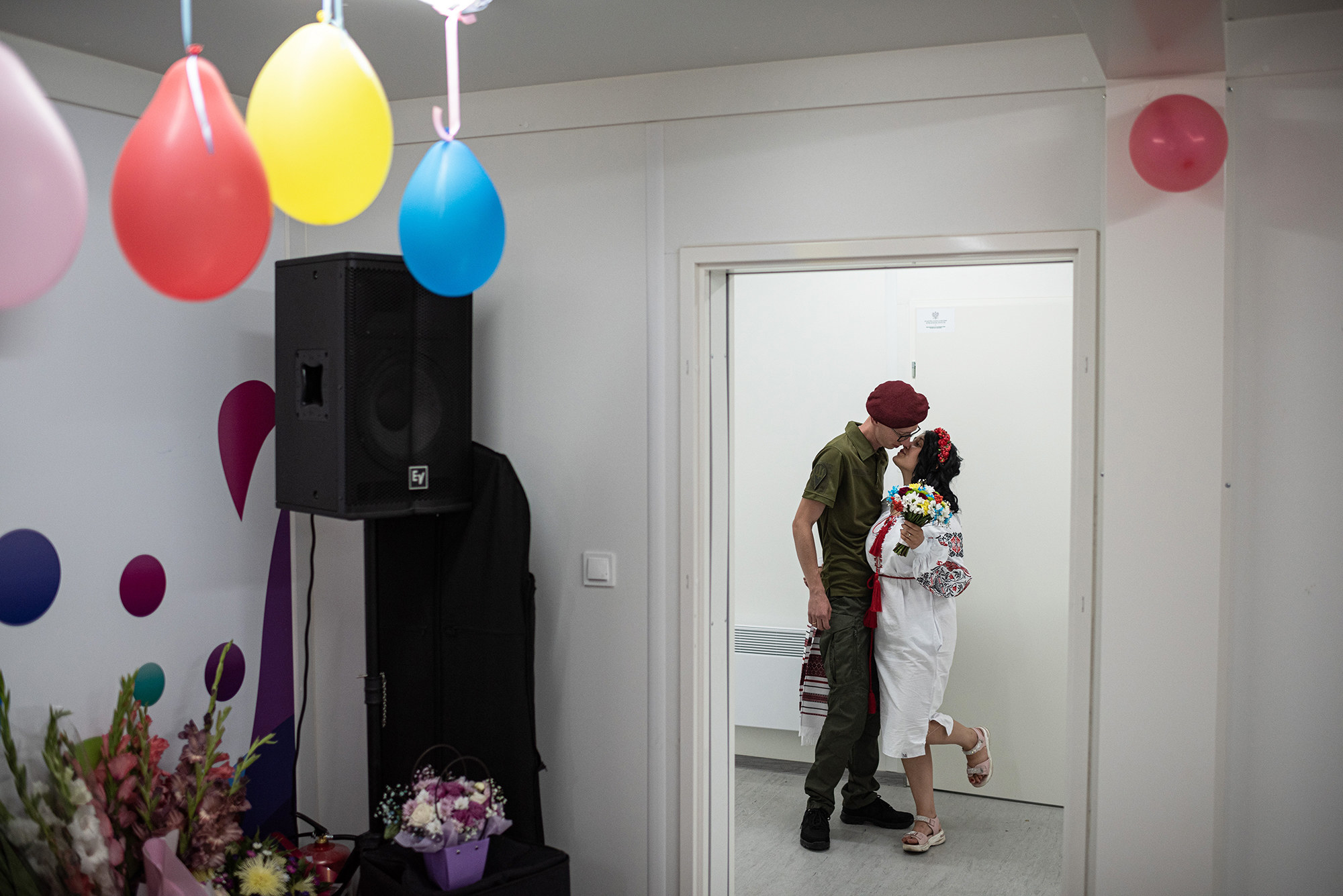
Sometime in July or August, my wife and I went to Bucha in the evening to have a nice dinner in a café there. This place will forever bear the scars of the Russian invasion, but it won’t disrupt the life going on. One of the stories that I did in Bucha was a wedding of a soldier and a young woman who moved there from eastern Ukraine, where the combat has been the fiercest in the past months.
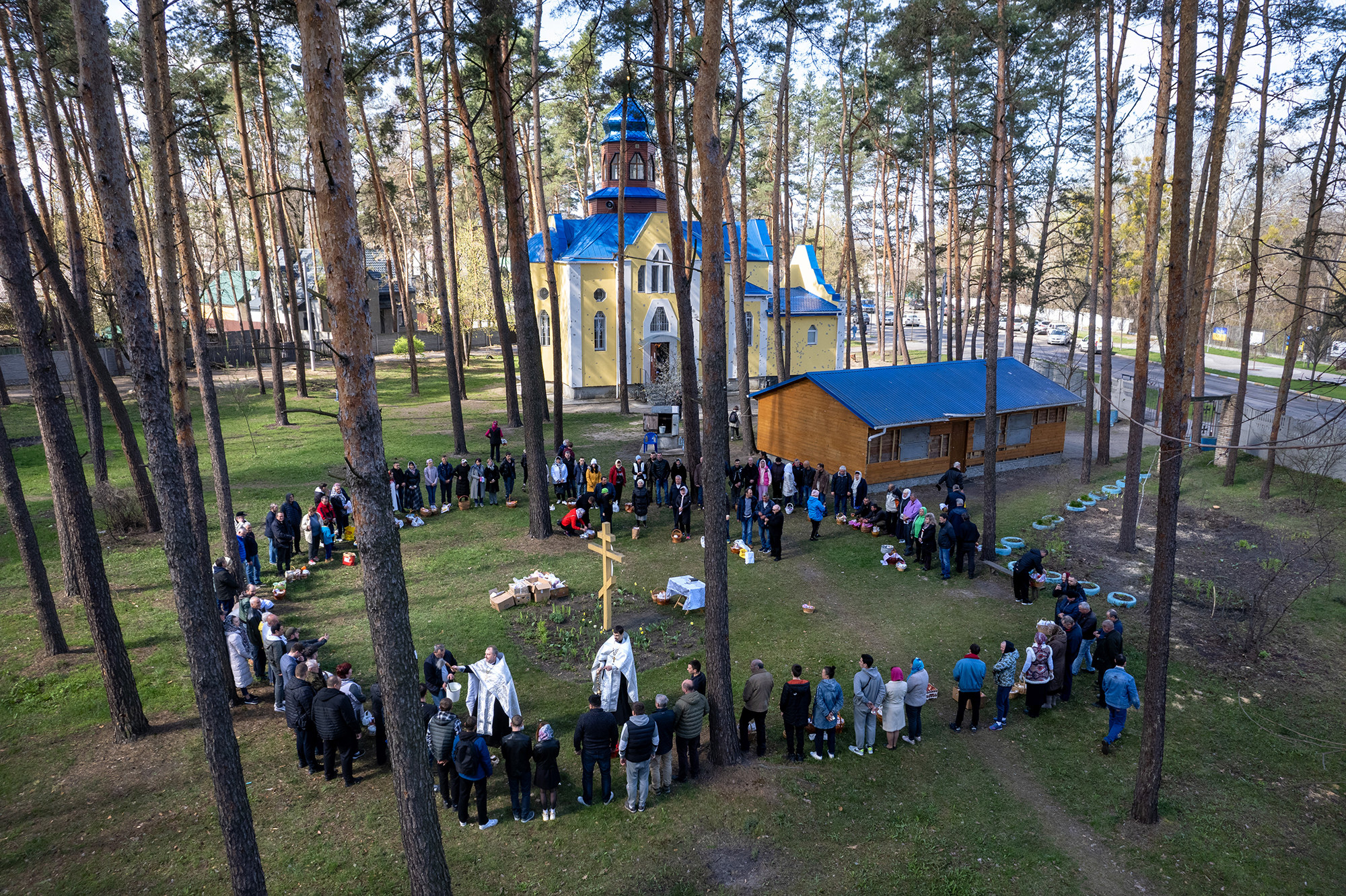
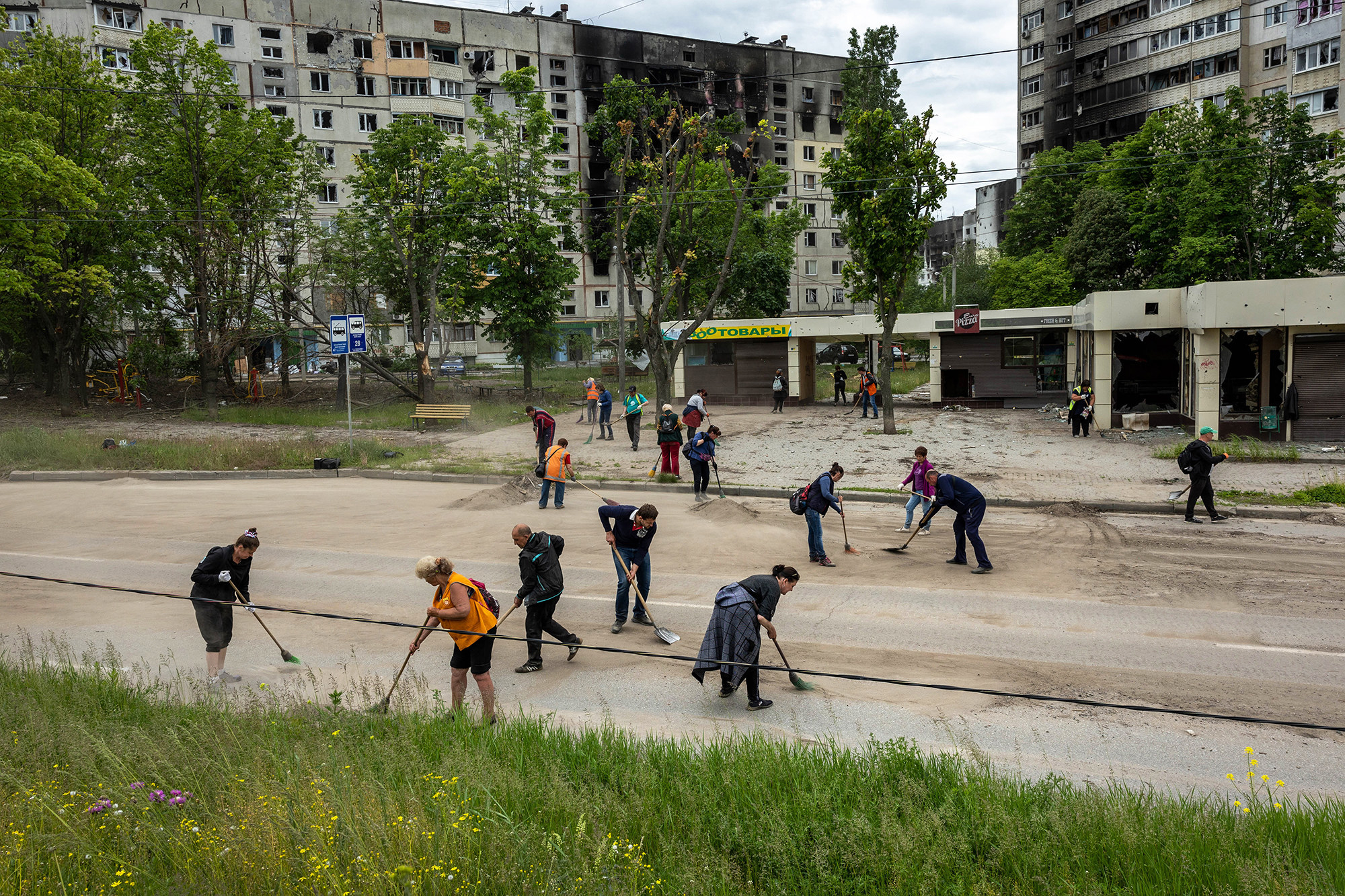
JM: Photojournalists have a unique role in cutting through the statistics and state propaganda. When we are at our best, we show a more true, less varnished version of reality. And I say that because complete objectivity is not really an option. I realize that goes against tradition, so I should explain.
Photojournalists are constantly being constrained by lack of access and the sheer randomness of what happens to be happening when we happen to be in one place or another. But there is more: All of us view reality through the filters of our own life experiences. That affects what we choose to photograph and the emphasis of how we depict people within their environments, both with the images we capture with the camera and, just as importantly, in the editing process afterward.
So maybe instead of trying to depict a completely objective reality in our photographs, our goal should perhaps be fairness. This should be fairness to those we photograph, showing them with the dignity they deserve. And fairness to the story, that we get it right, as best we can. For my images and videos from the war in Ukraine, I hope that viewers will see the dignity in those I have photographed.
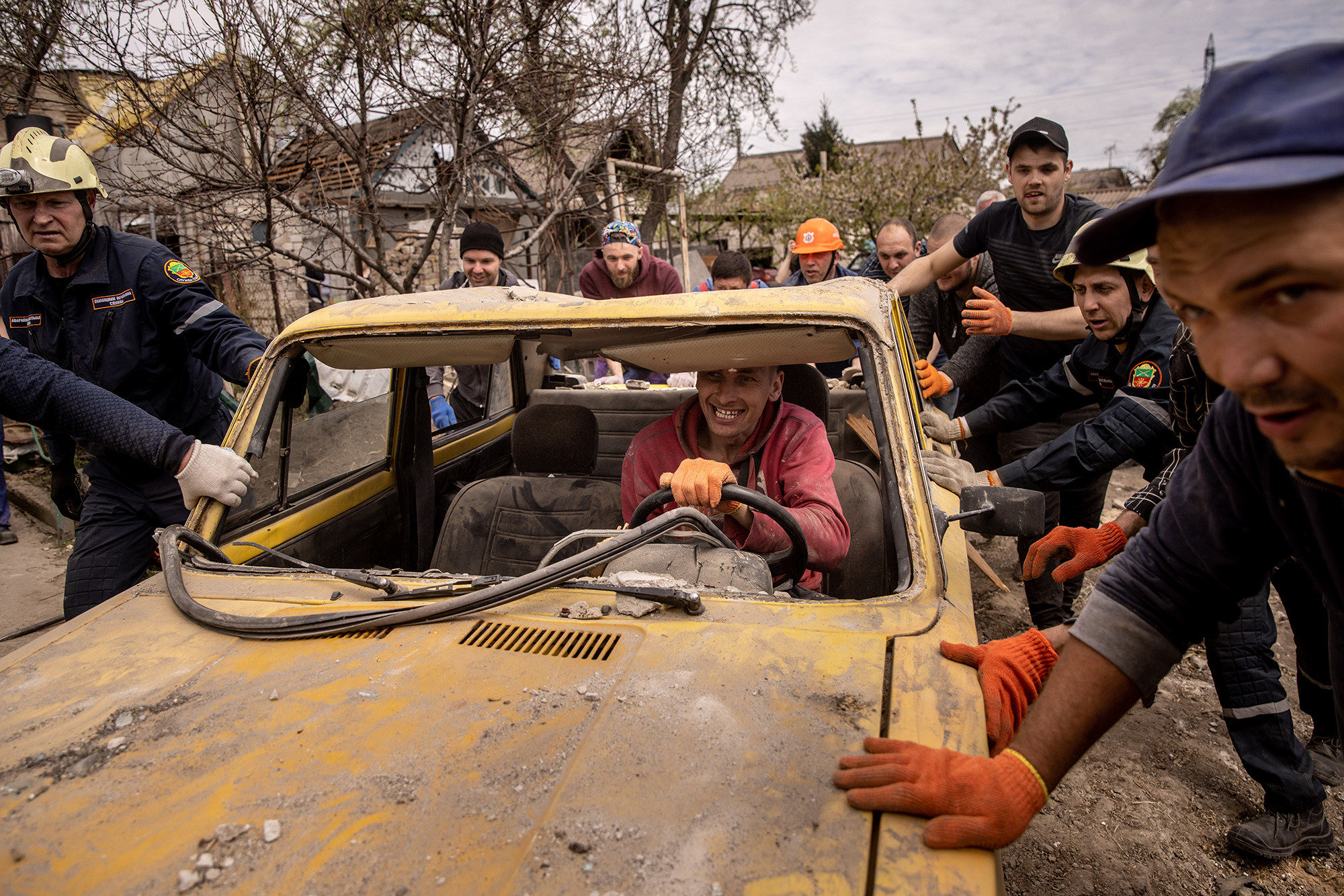
CM: I always want to tell the story of people; I always want to show the truth of what's going on, and sometimes that's the hardest thing, because access often hampers what you can and can’t photograph. I have spent six months in Ukraine, and my goal continues to be the same. I continue to push as far as I can, to take the viewer as close as possible, so they will understand what is really going on.
My photographs should take someone there. I want people to be able to have the experience I am seeing, through my photographs. I am not sure there would be any point for me to go to cover these assignments if I can't take the viewer right there, front and center, where I am. I want people to look at the photographs and then start a discussion; that’s how the information the photograph holds gets shared and how the image can have an impact. I look at a photograph as information. Some people write stories, draw pictures, paint scenes — I take photographs, and those photographs are full of information.
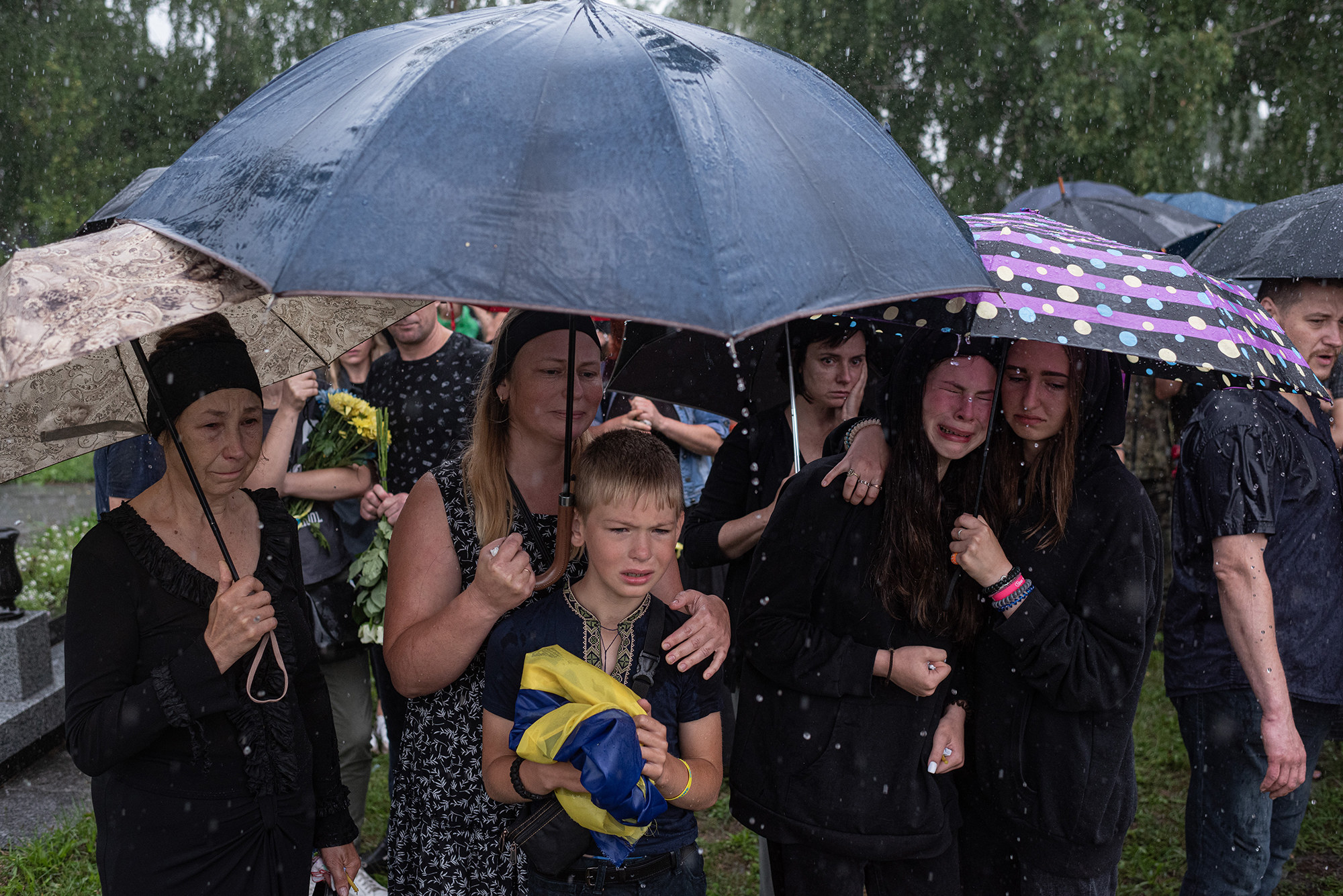
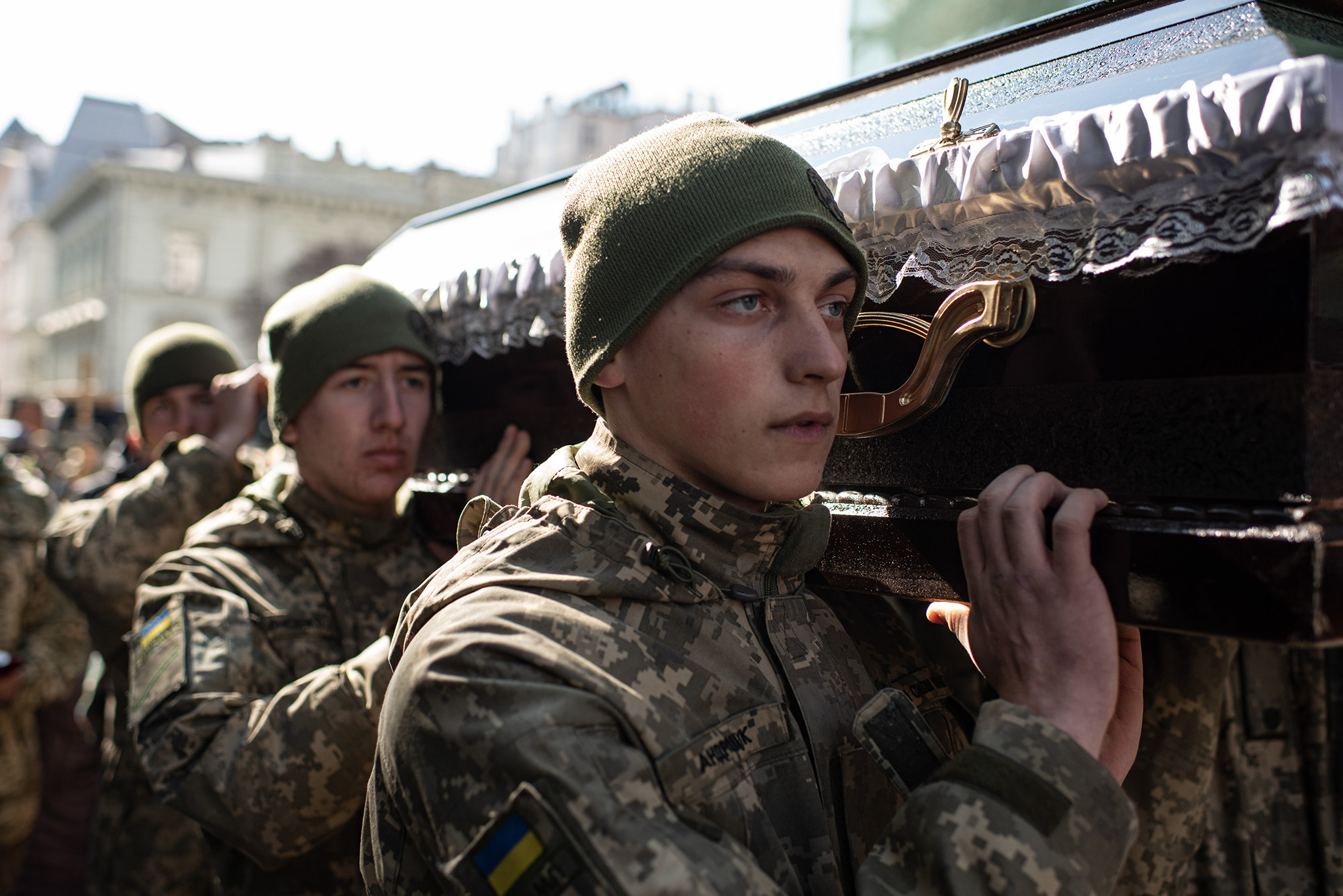
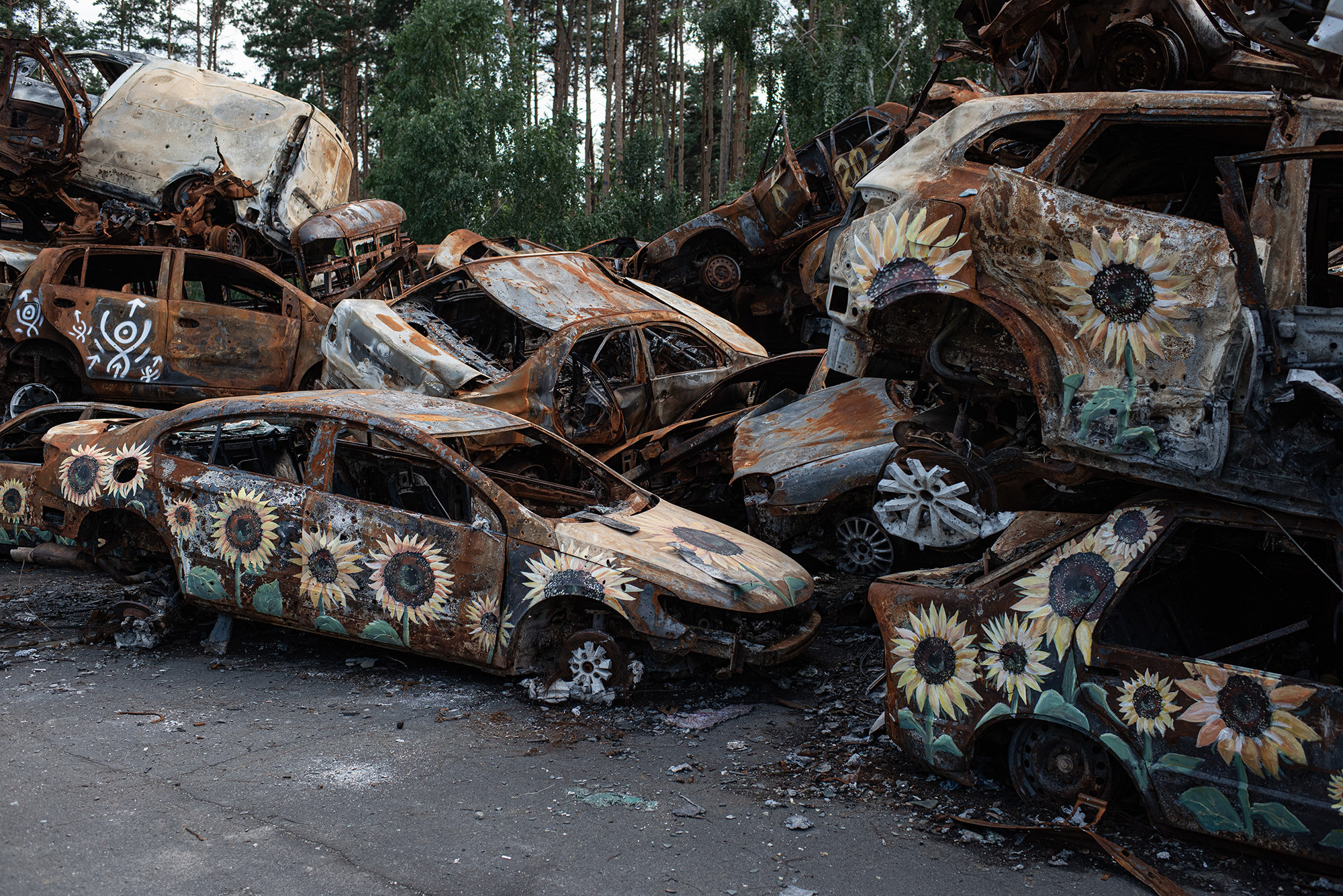
AF: I hope people get to see Ukraine through the eyes of somebody who shares a handful of the concerns and pains of people you can see in the photographs. The incredibly high price Ukrainians as a nation are paying for this war. The destruction. The resilience. The hope and the determination to keep going.
A friend once told me, "In your photographs, you always give a chance to life." I couldn't have said it better myself. ●
